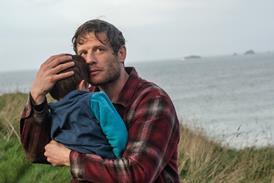The Digital TV Group (DTG) is set to begin working with Barb later this year as part of a cross-industry initiative that will attempt to harness the power of ‘big data’ for the TV industry.
The proposed working party group is one of 13 recommendations set out by the Future of Innovation in Television Technology Taskforce’s (FITT) final report, which was published earlier this week.
FITT was launched in 2012 by creative industries minister Ed Vaizey, with the aim of establishing how the UK’s pedigree of innovation in television technology can create further economic growth.
DTG chairman David Docherty (pictured) said: “How we fund content going forward is a key issue, so we have to look at new forms of advertising and marketing based on big data, by which we mean billions of viewing seconds.
“That information has to be crunched in new ways, so we better understand how consumers behave so we can sell goods and services to them. That is fundamental to content creation.”
The DTG is set to meet with Barb and think tanks such as the Open Data Institute in the autumn to work out how best to tackle the problem.
Docherty said: “One of the key issues is persuading consumers to give data in ways they are comfortable with.
“We need to say to consumers: ‘We have this data, if you give us permission you can benefit through targeted ads, and that data won’t be misused’.
“We also have to persuade regulators, while Barb has the major challenge of merging its data with data from viewing done on-demand and via apps. It’s not something anyone in the industry should pretend to know the answers to. It needs collective engagement.
“The data suggests viewers are still using live and that if they are time shifting, they time shift live. The direction of travel is towards on demand and mobile usage, so we have to figure out what that means for the broadcast value chain and the models by which we pay for everything, because we still have to pay for content.”
The FITT report is the result of almost 90 industry leaders spread across a steering group and five working groups who have reviewed consumer trends, the evolution of devices and applications, computing for the creative industries, data management and future networks and infrastructure.
Docherty said the overall aim was to identify what Britain was best at. “We looked hard at that sweet spot between advertising, marketing, and design, which we are brilliant at, and parts of the software stack where we are still make major contributions, to ask how UK companies can be built around this sweet spot. That was the core of the report.”
Docherty was buoyed by Vaizey’s “strong” response to the report.
“He explicitly said work should be done by the TSB (Technology Strategy Board) and the Connected Digital Economy Catapult, and he said he would convene the first leaders group.”


























No comments yet